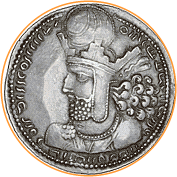|
|
|
This essay explores ways to use material objects in the
study of history. “Material objects” include items with physical substance.
They are primarily shaped or produced by human action,  though
objects created by nature can also play an important role in the history
of human societies. For example, a coin is the product of human action. An
animal horn is not, but it takes on meaning for humans if used as a drinking
cup or a decorative or ritual object. Historical sources analyzed as text
or images—for example, a legal charter on a piece of parchment or a religious
painting—are also material objects, perhaps significant symbolically. The
physical existence of a religious image in a dark cave as a “work of
art” provides evidence of the piety of an artist or a sponsor. In some societies,
before widespread literacy, the content of a legal document may have been
less important than its existence as visible “proof” of a claim. though
objects created by nature can also play an important role in the history
of human societies. For example, a coin is the product of human action. An
animal horn is not, but it takes on meaning for humans if used as a drinking
cup or a decorative or ritual object. Historical sources analyzed as text
or images—for example, a legal charter on a piece of parchment or a religious
painting—are also material objects, perhaps significant symbolically. The
physical existence of a religious image in a dark cave as a “work of
art” provides evidence of the piety of an artist or a sponsor. In some societies,
before widespread literacy, the content of a legal document may have been
less important than its existence as visible “proof” of a claim.

|



